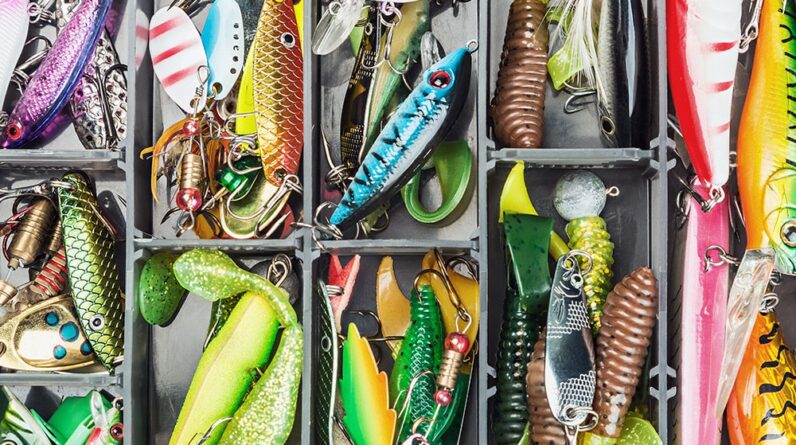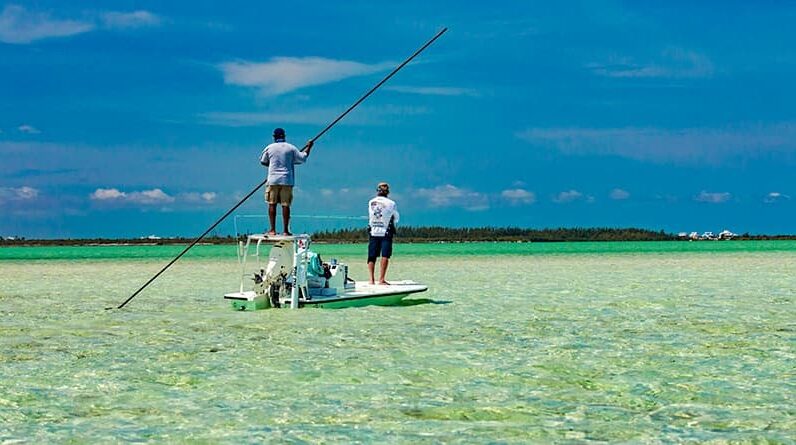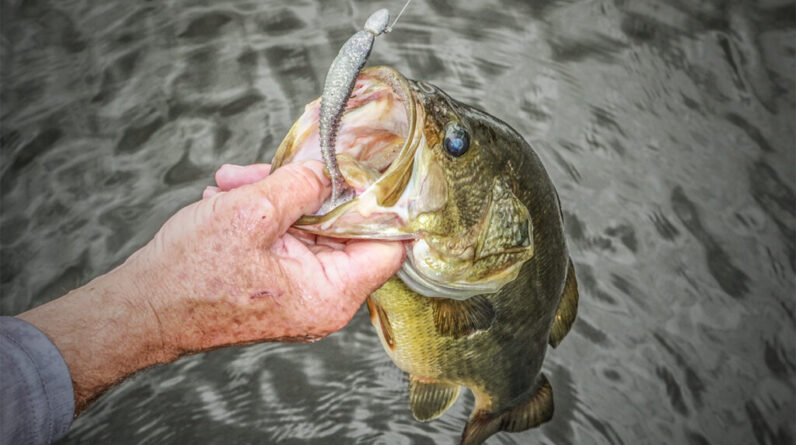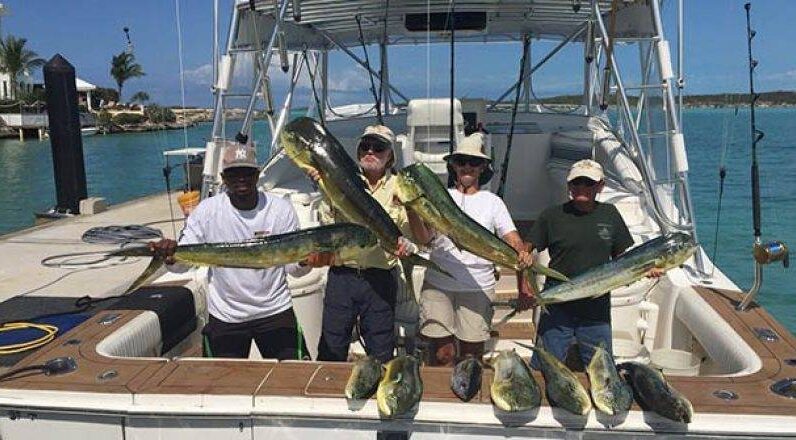Florida, with its warm climate and diverse ecosystems, stands out as one of the premier destinations for bass fishing. While many anglers traditionally associate Florida with the spring season for targeting bass, fall presents an often-overlooked opportunity to catch these aggressive fish. As temperatures drop, bass undergo behavioral shifts, making fall fishing both a challenge and a rewarding experience. This guide delves into everything you need to know about bass fall fishing in Florida, covering the best locations, effective techniques, and the right tackle, along with tips on understanding bass behavior during the cooler months.
Cheerfulfisherman.com Headquarters, conveniently located in Central Florida, serves as the ideal base for research and development. With access to some of the best bass fishing waters in the state, Central Florida acts as our testing ground and backyard playground, allowing us to refine our approach to bass fishing. Fall is a particularly exciting time here, as bass become more active, feeding in preparation for the colder months ahead. Whether you’re a seasoned angler or a beginner, fall offers a unique window of opportunity to land trophy-sized bass in Florida’s vast and varied waters.
1. Understanding Fall Bass Behavior
Seasonal Changes
Fall is a transitional period for bass, as they move from their summer patterns to prepare for the winter months. The drop in temperature affects water conditions, which in turn impacts the bass’s feeding habits and locations. In the summer, bass tend to move to deeper waters where temperatures are cooler. However, as fall approaches and the water cools, bass begin to move toward shallower areas, especially near vegetation, as they become more active and aggressive feeders.
Bass Feeding Frenzy
Bass instinctively know that the cooler months are approaching, and they enter a feeding frenzy during the fall. The abundance of baitfish such as shad and bluegill in shallow waters makes it easier for bass to feed in preparation for the winter months. During this time, they will gorge themselves to build up energy reserves. This increased feeding activity provides a prime opportunity for anglers to catch large bass.
Key Locations in Fall
During the fall, bass are often found in the following locations:
- Shallow flats: These areas warm up quickly in the sunlight, attracting both bass and baitfish.
- Grass beds and submerged vegetation: Bass seek out ambush points where they can easily target schools of baitfish.
- Creek mouths and tributaries: Cooler water flowing into lakes and rivers attracts bass looking to stay in comfortable temperatures.
- Points and ledges: These provide transitional areas where bass can move between shallow and deeper waters.

2. Best Times to Fish for Bass in the Fall
While Florida’s fall season still offers mild temperatures compared to other parts of the U.S., timing is crucial to take advantage of peak bass activity. The following times are typically the most productive for bass fishing during the fall:
Early Morning and Late Afternoon
Bass are most active during the cooler parts of the day in early morning and late afternoon. During these times, the fish are more likely to come out of hiding to hunt for food. Using topwater lures can be particularly effective as bass are often hunting baitfish near the surface.
Cloudy and Overcast Days
Overcast skies reduce light penetration in the water, which can cause bass to feel more comfortable moving in shallower areas and being more active throughout the day. On these days, bass are likely to strike at a variety of lures, and fishing may be productive for longer periods compared to sunny days.
During a Cold Front
When a cold front moves through, it can cause a flurry of activity among bass. The change in weather conditions triggers their instincts to feed aggressively before the water cools down significantly. However, after a cold front passes and temperatures drop, bass may become more lethargic and less active, requiring slower presentation techniques.
3. Top Locations for Bass Fall Fishing in Florida
Florida is known for its numerous lakes, rivers, and reservoirs, many of which are ideal for bass fishing year-round. However, some locations stand out during the fall season due to their unique ecosystems and abundant bass populations. Here are some of the best fall bass fishing spots in Florida:
Lake Okeechobee
Lake Okeechobee, the largest freshwater lake in Florida, is a legendary bass fishing destination. Fall brings cooler temperatures, which cause bass to migrate from deeper waters to the lake’s extensive grass beds and shallow flats. The lake’s healthy population of largemouth bass makes it an ideal spot for anglers looking to capitalize on fall feeding patterns.
Key areas to focus on include:
- The North Shore: Known for its grassy areas and large schools of baitfish.
- The Rim Canal: Offers both deep and shallow areas, providing flexibility in your fishing approach.
Kissimmee Chain of Lakes
The Kissimmee Chain of Lakes, located in Central Florida, is another prime location for fall bass fishing. The interconnected lakes provide a variety of fishing environments, including shallow marshes, grassy flats, and deep channels. In the fall, bass tend to concentrate around the mouths of creeks and canals, as well as near submerged vegetation.
Key lakes to fish include:
- Lake Tohopekaliga (Lake Toho): Known for producing trophy-sized bass.
- Lake Cypress: Offers a variety of cover, including hydrilla beds and lily pads, where bass like to ambush prey.
St. Johns River
The St. Johns River offers a unique fall fishing experience due to its slow current and brackish water in some areas. During the fall, bass in the river are often found near drop-offs, submerged structures, and along the riverbanks where baitfish congregate.
Key spots to fish in the St. Johns River include:
- Lake George: A large natural lake along the river with abundant bass populations.
- Astor: A small town along the river known for its excellent bass fishing opportunities.
Rodman Reservoir
Rodman Reservoir, also known as Lake Ocklawaha, is a man-made reservoir that offers some of the best fall bass fishing in Florida. The reservoir is known for its submerged timber, stump fields, and expansive grass beds, which provide excellent cover for bass. Fall fishing here can be particularly rewarding, as the bass take advantage of the cooling water temperatures and increased baitfish activity.

4. Best Lures and Baits for Fall Bass Fishing
Choosing the right lure or bait is crucial to success in fall bass fishing. During this time of year, bass are focused on feeding, so using lures that mimic their natural prey is often the most effective strategy. Here are some of the top lures and baits to use when targeting bass in the fall:
1. Crankbaits
Crankbaits are one of the most versatile lures for fall bass fishing. They can cover a lot of water quickly, making them ideal for finding active bass. Look for crankbaits that mimic baitfish such as shad, as these are common prey for bass in the fall.
- Square-bill crankbaits: These are effective for shallow water fishing around grass beds and submerged structures.
- Deep-diving crankbaits: Use these in deeper water when bass are holding around ledges or drop-offs.
2. Topwater Lures
Topwater lures are particularly effective during the early morning and late evening when bass are actively feeding near the surface. These lures create surface disturbances that can trigger aggressive strikes from bass.
- Poppers: These create a popping sound that can attract bass from a distance.
- Frogs: Perfect for fishing around lily pads and thick vegetation where bass like to hide.
3. Soft Plastic Swimbaits
Swimbaits are a great option for mimicking the natural movement of baitfish. Use soft plastic swimbaits around grass beds, creek mouths, and shallow flats where bass are feeding.
- Paddle-tail swimbaits: The natural wobbling action of the paddle-tail attracts bass looking for an easy meal.
- Rigged weedless: Ideal for fishing in areas with heavy vegetation without getting snagged.
4. Jigs
Jigs are another excellent option for fall bass fishing, especially when the fish are holding close to cover. Jigs can be fished slowly along the bottom, mimicking crawfish or other bottom-dwelling prey.
- Football jigs: Use these in rocky or hard-bottom areas where bass are likely to be foraging.
- Swim jigs: Effective for fishing around grass and vegetation when bass are more active.
5. Spinnerbaits
Spinnerbaits are known for their flash and vibration, which can entice bass even in murky water conditions. These lures are particularly effective during fall when bass are chasing schools of baitfish.
- Willow-blade spinnerbaits: Ideal for clear water when you want more flash to mimic the movement of baitfish.
- Colorado-blade spinnerbaits: Better suited for murky water or low-light conditions due to their strong vibration.

5. Fall Fishing Techniques
Now that you know what lures and baits to use, it’s important to understand how to fish them effectively. Fall bass fishing requires adjusting your techniques to match the conditions and bass behavior. Here are some of the most effective techniques for catching bass in the fall:
Slow and Steady Retrieve
As the water cools, bass metabolism begins to slow down. While they are still feeding aggressively in the fall, they may not be as fast to chase down prey. A slow and steady retrieve can often be more effective than fast, erratic movements. This is especially true when fishing jigs or soft plastic lures.
Targeting Structure
Bass love to hide near structures such as submerged timber, rock piles, and vegetation. These areas provide them with ambush points where they can strike at passing baitfish. When fishing near structure, use a slow, deliberate presentation to entice bass to strike.
Covering Water with Crankbaits
Crankbaits are an excellent tool for covering large areas of water quickly. This is particularly useful in the fall when bass may be scattered across different depths and locations. Start by casting shallow crankbaits near the shore or grass beds, then gradually move to deeper areas with deep-diving crankbaits if you don’t get any bites right away.
6. Seasonal Adjustments: Adapting to Weather Patterns
While fall in Florida tends to be milder than in other parts of the country, there are still fluctuations in temperature and weather patterns that can affect your bass fishing success. Understanding how to adjust your tactics based on these factors is key to making the most of your time on the water.
Cold Fronts
As mentioned earlier, cold fronts can cause a flurry of bass activity, followed by a period of lethargy. When a cold front is moving in, bass will often feed aggressively in the hours leading up to the drop in temperature. This is the time to use faster-moving lures like crankbaits or spinnerbaits to take advantage of their aggressive feeding behavior. However, once the cold front passes and the temperature drops significantly, bass may become less active. In these conditions, you may need to slow down your presentation with jigs or soft plastics and fish closer to structure where bass are likely to be holding.
Rainy or Overcast Days
Rainy or overcast days can actually improve bass fishing conditions, as lower light levels make bass more comfortable moving into shallower water and feeding actively. On days like this, you can use more aggressive presentations like topwater lures or spinnerbaits, as bass are more likely to strike near the surface or in open water. Cloud cover also allows you to fish throughout the day without the fish retreating to deeper, shaded areas as they might on sunny days.
Windy Conditions
Wind can be both a blessing and a challenge for fall bass fishing. A light to moderate wind can create ideal conditions by stirring up the water, making it harder for bass to see you and your boat, while also pushing baitfish into certain areas. In these conditions, crankbaits, spinnerbaits, and swimbaits are effective lures, as their action can attract bass in choppy water. On the other hand, heavy wind can make it difficult to maintain boat control and accurately cast your lures. When fishing in windy conditions, try to position yourself so you can cast with the wind, allowing for longer, more accurate casts.

7. Best Gear for Fall Bass Fishing in Florida
Having the right gear is essential for maximizing your success when bass fishing in the fall. From rods and reels to line and tackle, here’s what you’ll need to be fully equipped for a productive day on the water.
Rods and Reels
When it comes to fall bass fishing, versatility is key. You’ll want to have multiple rod and reel setups on hand to cover different techniques and presentations.
- Medium-Heavy Baitcasting Rod (7’0″ to 7’6″): This is a great all-purpose rod for throwing crankbaits, spinnerbaits, and swimbaits. The medium-heavy action gives you the backbone needed to pull bass out of heavy cover, while still offering enough sensitivity for detecting subtle bites.
- Medium Spinning Rod (6’6″ to 7’0″): A spinning rod is ideal for finesse techniques, such as fishing soft plastics, jigs, and shaky heads. The spinning setup allows for lighter line and smaller lures, which can be critical when bass are being more finicky.
- Heavy Baitcasting Rod (7’6″ to 8’0″): For flipping and pitching jigs or fishing in heavy cover, a longer, heavier rod is necessary. This setup will give you the power to pull bass out of thick vegetation or submerged timber.
Reel Selection
For baitcasting setups, look for reels with a fast gear ratio (7:1 or higher) for faster lure retrieval, especially when fishing crankbaits and spinnerbaits. Spinning reels should have a smooth drag system and be capable of holding lighter line for finesse fishing. A reel with a good balance between speed and power is ideal for adapting to various fall fishing conditions.
Line Selection
Your choice of fishing line can make a big difference when fishing for fall bass. Here are the most common types of line and when to use them:
- Fluorocarbon Line (12-20 lb test): Fluorocarbon is nearly invisible underwater, making it an excellent choice for clear water conditions. It also has low stretch, which helps with sensitivity and hook-setting power when fishing jigs or soft plastics.
- Braided Line (30-65 lb test): Braid is ideal for fishing heavy cover or when using topwater lures like frogs. The lack of stretch gives you maximum control over fish in dense vegetation, while the high strength ensures you won’t lose a fish to a break-off.
- Monofilament Line (10-15 lb test): Mono has more stretch than fluoro or braid, which can be advantageous when fishing crankbaits or spinnerbaits, as it helps absorb the shock of a strike. Mono is also a good option for topwater lures because it floats.
Tackle Essentials
In addition to your rods, reels, and line, having the right tackle on hand will ensure you’re prepared for a variety of fishing situations.
- Assorted Crankbaits: Bring a range of shallow, medium, and deep-diving crankbaits to cover different depths. Look for colors that mimic local baitfish, such as shad, bluegill, and golden shiners.
- Topwater Lures: Poppers, frogs, and buzzbaits should be part of your arsenal for early morning and late afternoon fishing sessions.
- Soft Plastics: Stock up on soft plastic worms, craws, and swimbaits in natural colors like green pumpkin, watermelon, and black/blue. These can be fished on a Texas rig, Carolina rig, or shaky head.
- Jigs: A variety of football and swim jigs in natural colors should be included for targeting bass holding near structure.
- Spinnerbaits: Bring both willow-blade and Colorado-blade spinnerbaits in white, chartreuse, and natural baitfish colors for fishing in murky water or low-light conditions.
8. Conservation and Ethical Fishing Practices
As responsible anglers, it’s important to keep conservation in mind when fishing for bass, especially in popular destinations like Florida. Here are a few ethical fishing practices to follow when targeting fall bass:
Catch and Release
While Florida is home to some of the best bass fishing in the country, many of these waters are heavily fished throughout the year. To ensure that bass populations remain healthy for future generations of anglers, practicing catch and release is essential, especially when it comes to trophy-sized fish. Handle fish carefully, minimize time out of the water, and release them as quickly as possible to ensure they survive and continue to thrive in their natural habitat.
Proper Handling Techniques
When handling bass, use both hands to support the fish’s body and avoid putting excessive pressure on the jaw or gills. Wet your hands before touching the fish to protect its slime coat, which helps prevent infection and disease.
Avoiding Spawning Areas
While fall is not the primary spawning season for bass, in warmer regions like Florida, some bass may still spawn late into the year. Be mindful of areas that could be spawning grounds and avoid fishing them to give the fish a chance to reproduce without interference.
Dispose of Waste Properly
Always carry a trash bag with you when fishing, and make sure to clean up after yourself. Fishing line, plastic lures, and other debris can harm wildlife and pollute the water, so make sure to properly dispose of all waste.
9. Fall Fishing Safety Tips
Safety should always be a priority when fishing, regardless of the season. Here are some important safety tips to keep in mind when heading out for a fall bass fishing trip:
Weather Awareness
Florida’s weather can be unpredictable, especially in the fall. Keep an eye on the forecast and be prepared for sudden changes in weather conditions. Thunderstorms and heavy winds can develop quickly, so always have a plan to seek shelter if necessary.
Sun Protection
Even though fall brings cooler temperatures, the Florida sun can still be intense. Wear sunscreen, sunglasses, and a hat to protect yourself from harmful UV rays. Lightweight, long-sleeve fishing shirts are a great option for staying cool while shielding your skin from the sun.
Life Jackets
If you’re fishing from a boat, wearing a life jacket is a must. Even experienced swimmers can get into trouble if they fall into the water unexpectedly, so make sure everyone on board is wearing a properly fitted life jacket.
Hydration and Snacks
Stay hydrated by bringing plenty of water, even in cooler weather. Dehydration can sneak up on you, especially when you’re focused on fishing. Pack healthy snacks to keep your energy levels up throughout the day.
Boat Maintenance
Before heading out, make sure your boat is in good working condition. Check the engine, fuel levels, and all safety equipment, including life jackets and fire extinguishers. Having a fully charged phone or marine radio is also important for emergencies.

Conclusion: Maximize Your Fall Bass Fishing Experience in Florida
Fall bass fishing in Florida offers anglers the perfect combination of active feeding behavior, diverse fishing locations, and pleasant weather conditions. By understanding the seasonal patterns of bass, using the right techniques, and being prepared with the proper gear, you can have an incredibly successful and enjoyable fishing experience. Whether you’re targeting trophy-sized bass on Lake Okeechobee or exploring the tributaries of the St. Johns River, Florida’s fall fishing season is sure to provide unforgettable moments on the water.
So, grab your gear, study the weather patterns, and get ready for some of the best bass fishing Florida has to offer. With patience, practice, and persistence, you’ll be reeling in big bass in no time. Happy fishing!






